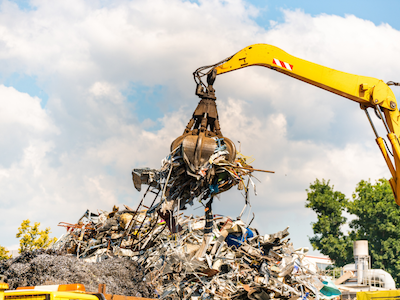Decarbonization

June 30, 2025
Miles of wire, tons of signals: Prysmian’s cable deal to feed largest U.S. transmission line
Written by Nicholas Bell
Cable and wire manufacturer Prysmian Group has signed a long-term manufacturing agreement with power-company Invenergy to supply the Midwest with the largest transmission line in U.S. history.
Prysmian’s Williamsport, Pennsylvania facility will supply a staggering 12,500 miles of overhead aluminum-conductor steel-reinforced (ACSR) cable for Invenergy’s Grain Belt Express project and other related high-voltage direct current (HVDC) projects.
The Grain Belt Express is a transmission project led by renewable energy developer Invenergy intended to deliver 5,000 megawatts of Midwest-generated wind power to energy-hungry power grids on the east coast.
Metal math: Prysmian’s growing footprint
The 12,500 miles of ACSR cable equates to roughly 62,500 metric tons (mt) worth of aluminum content within the ACSR cable using high-purity 1350 alloy.
The partnership will also support a 51,000 square foot expansion of Prysmian’s Williamsport facility that is “set to double U.S. manufacturing capacity for certain advanced transmission conductors using aluminum”, likely referring to, at least in part, production of Bluebird ACSR cable.
Pennsylvania Governor, Josh Shapiro, first announce the expansion in April, backing the operational buildout with a funding package from the state’s Department of Community and Economic Development, which includes a $3 million loan through the Pennsylvania Industrial Development Authority, a $135,000 Pennsylvania First grant, and potential tax credits through the Commonwealth’s Manufacturing Tax Credit Program.
The news coincides with Prysmian subsidiary Encore Wire’s recent expansion announcement of its own in Texas, signaling the company’s push to grow its domestic manufacturing footprint.
No slack in the line: Supply chain impact
To put the contract into perspective: this agreement alone accounts for over a quarter of CRU’s estimated U.S. aluminum power cable production for this year.
It should be noted that it’s not replacing old line – it’s all new build, which means strong metal demand but not necessarily a correlating amount of scrap generation for recyclers who handle high-value “cutter-grade” electrical conductor (EC) scrap.
With ACSR comprised mostly of 1350 aluminum alloy, the project could place sustained upward pressure on spot premiums and tighten redraw rod availability.
In 2024, the U.S. imported 297,909mt of aluminum wire and redraw rod combined – but only 5,865mt of actual aluminum wire. The differentiation in import categories underscores how dependent the U.S. is on semi-finished feedstock, particularly from Canada and the Middle East.
Some of that tonnage may already be sourced from Prysmian’s Canadian operations, while a significant portion of the remaining tonnage likely comes from just two other producers: Northern Cables, with three facilities in Ontario, and Nexans’ three widely dispersed facilities across Ontario, Quebec, and Saskatchewan.
The second-largest exporter to the U.S. after Canada is Bahrain, home to Midal Cables and positioned in a geopolitically sensitive region whose supply routes depend on passage through the Strait of Hormuz, a regional supply chain flashpoint with exposure to the Iran-Israel conflict.
New currents
This is a rare alignment of domestic manufacturing and energy infrastructure, as well as a bullish indicator for the broader aluminum wire and cable market.
It’s also the second major development for Prysmian Group’s U.S. assets in less than a month – momentum which, if viewed in isolation, makes it seem as though the company alone is scaling up U.S. production in a way that might legitimately move the needle.







